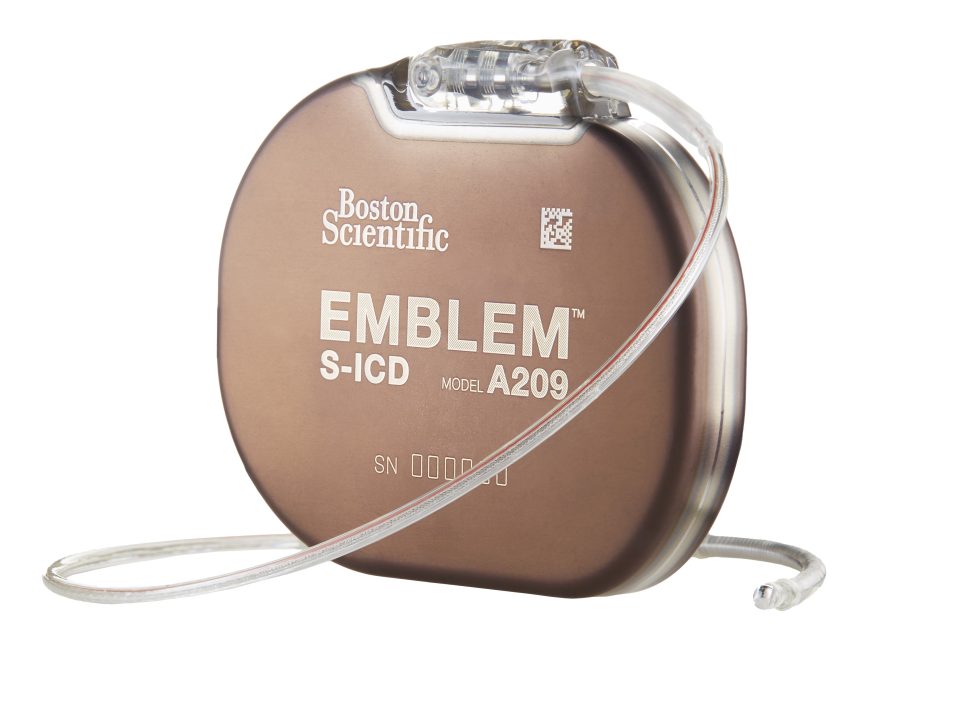Implantable Cardioverter-Defibrillators (ICD)
 An implantable cardioverter-defibrillator (ICD) is a device that detects life-threatening, rapid heartbeat known as arrhythmia. If an arrhythmia occurs, the ICD quickly sends an electrical shock to the heart that changes the rhythm back to normal. This is called defibrillation.
An implantable cardioverter-defibrillator (ICD) is a device that detects life-threatening, rapid heartbeat known as arrhythmia. If an arrhythmia occurs, the ICD quickly sends an electrical shock to the heart that changes the rhythm back to normal. This is called defibrillation.
Deborah® is proud to offer patients the EMBLEM™ Subcutaneous Implantable Defibrillator (S-ICD) System.
The EMBLEM S-ICD System is an innovative and truly novel ICD. Unlike traditional ICDs that require placement of at least one lead in or on the heart, the S-ICD System is implanted just under the skin and provides the patient protection from SCA without invading the heart and blood vessels. It is the only fully subcutaneous ICD available.
The EMBLEM S-ICD System is 20% thinner and is projected to last 40% longer than the previous S-ICD System. These improvements may further improve patient comfort and cosmetic outcomes while reducing the number of times the device will require replacement. The EMBLEM S-ICD System is also enabled for remote patient management for increased patient convenience.
How does it work?
A Deborah® electrophysiologist will insert the ICD while the patient is awake. The surgeon will make an incision and create space under the skin and muscle for the ICD generator. In most cases, this space is made near the left shoulder.
The physician will place the electrode into a vein, then into the heart. This is done using a special x-ray to see inside the chest. Then the surgeon will connect the electrodes to the pulse generator and pacemaker.
The procedure most often takes 2 to 3 hours.
Am I a good candidate for treatment?
An ICD is placed in people who are at high risk of sudden cardiac death from an abnormal heart rhythm that is life threatening, including ventricular tachycardia and ventricular fibrillation.
Patients at high risk include those who:
- Have had episodes of one of these abnormal heart rhythms
- Have a heart that is weakened, too large, and does not pump blood very well
- Have a type of congenital heart problem or genetic health condition
What can I expect after treatment?
After getting an ICD, patients need regular checkups. The provider will check to see if:
- The device is properly sensing the heartbeat
- How many shocks have been delivered
- How much power is left in the batteries
